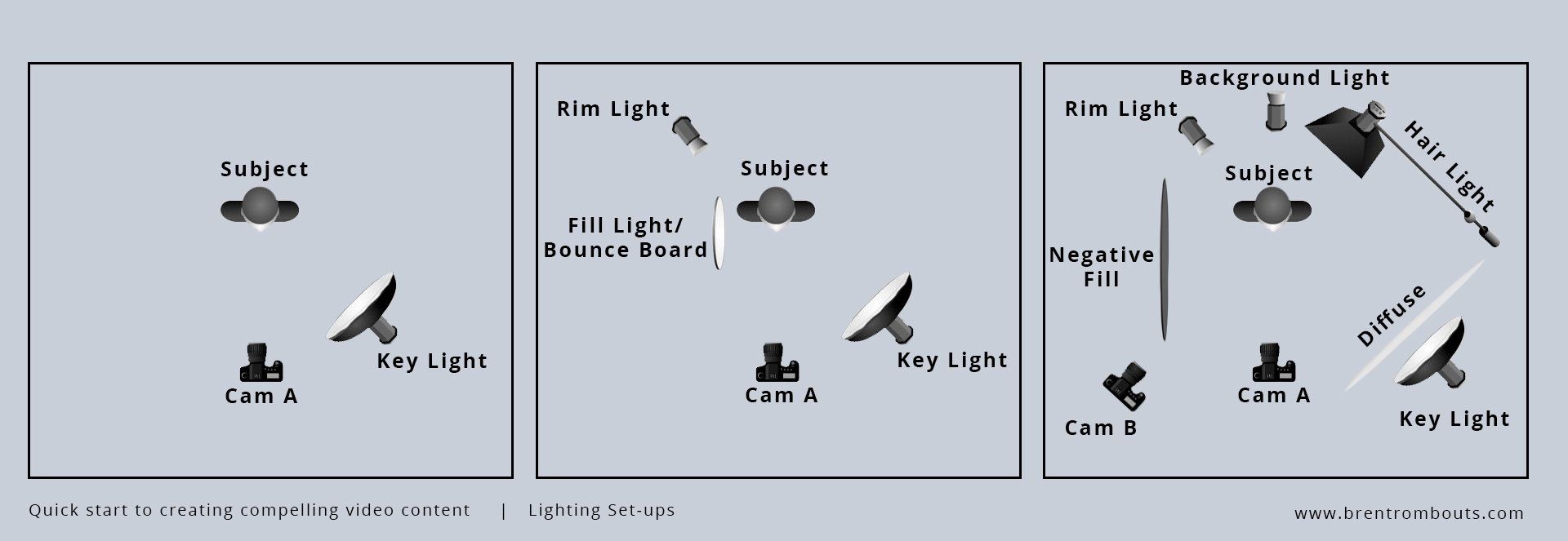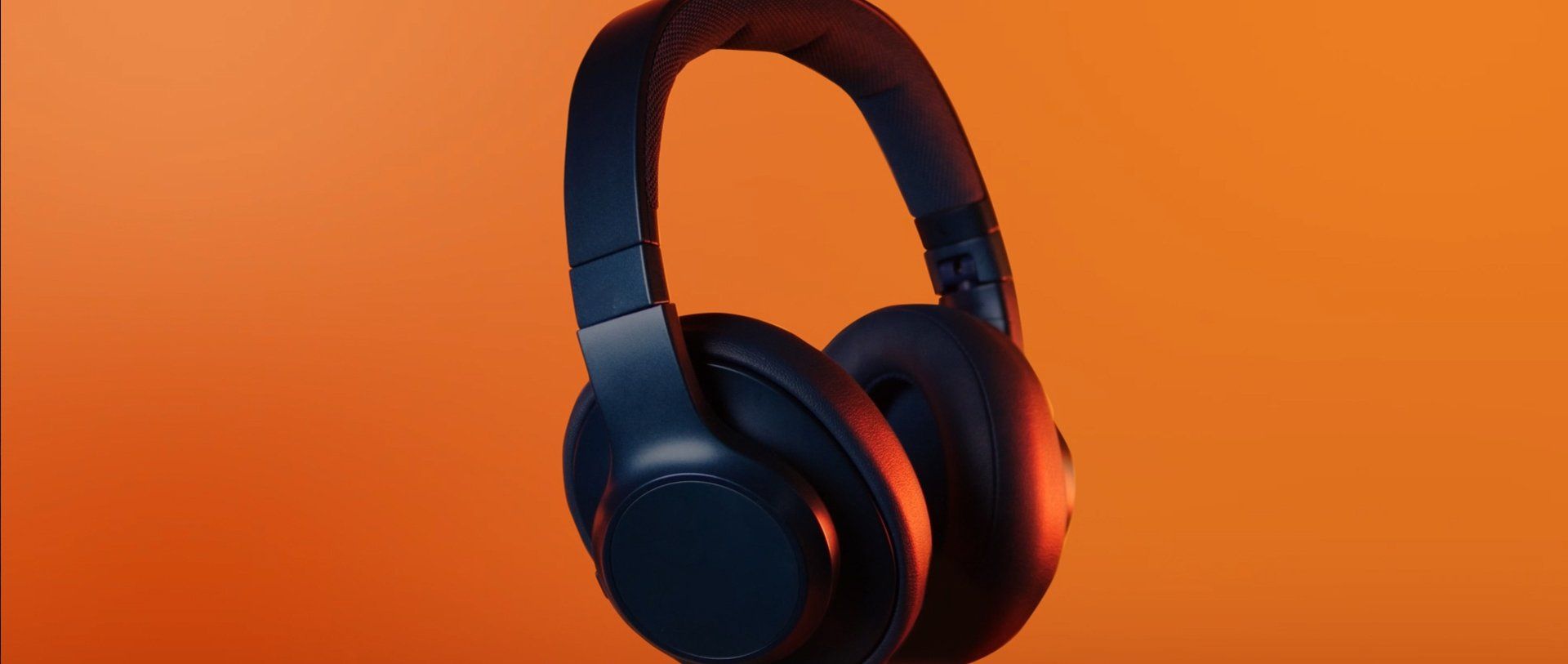Quick start to creating compelling video content
Frame of mind
As a mindset for creating compelling stories that stand out, it's important to remember that the internet is saturated with content. There's so much content out there, so many organizations and individuals fighting for your attention. Storytellers who know how to capture attention and engage, are the ones who come out on top. We're curious by nature and we have the urge to want to know why, how, when, and where. It's important to know exactly what story you want to tell and how this answers that exact curiosity. Communicate in a simple and clear way that allows for simple integration in the viewers life. When creating content, ask yourself:
How can I add value to the audience?
Now that we have the right frame of mind, let's dive in to the 4 different phases of creating compelling stories:
pre-production, production, post-production, distribution.

Preproduction
Who is your audience? What is the one thing you want your audience to
take away
from the video?
As with any marketing strategy, it's important to define your
goal
first. There are usually three goals organizations want to achieve:
- Growing awareness
- Increasing conversions
- Improving customer retention
In addition, define how will you speak to your target audience in particular?
Here are a few different
types
of video formats you can try:
- Explainer videos
- Infotainment
- Testimonials
- Interviews
- Live streams
- Product videos
- Vlogs
- Webinar
- User-Generated Content
- Contest-Giveaways
Each of these will require a different strategy and format. If your goal is driving awareness on let's say a subject as sustainability, you might have daily content similar to Darin Olien. However, if your goal is to increase conversions, you might instead choose to create videos that are embedded into your sales pages, product pages or even the blog. If your goal is to increase loyalty, retention, and conversion, you could create a series of explainer videos showing how to use your product. If you ever want to study someone leveraging video and social media at scale, pay attention to Gary Vaynerchuck. He is one of the most prominent figures in entrepreneurship and is known for his marketing strategies.
What strategy should you choose to support your business? All businesses have to focus on 2 key elements: marketing and customer experience. Marketing is defined here as helping others achieve their goal. You need to understand your audience and make it as easy as possible for them to find you and trust your content. Customer experience is defined here as servicing your audience and making sure that what you say you will do, you will actually do. Meaning your video, product and service has to deliver on the promise that you are giving.
Once you’ve defined the goal of your video, write a script. Don’t be afraid to rearrange, rewrite, and delete sections of your work. And be careful not to bore your audience with irrelevant, repetitive information. As Einstein once said “ Everything should be made as simple as possible, but no simpler.” Most of times when you can remove information and the point of your message gets across it can probably go.
"Everything should be made as simple as possible, but no simpler"
If you're unsure on what to create content,
avoid making assumptions, start with market research. Do your best to discover the pain points of your audience. Look up what clients ask about your products online. Send a survey to your email list asking about their biggest struggles. Then write a script around common questions and responses.
Video scripts are great tools to keep you focused on the most important points you want to make. Depending on the scope of the video you can additionally create a
moodboard and
storyboard
that visually supports your message. A moodboard is a collage of images, material samples, color palettes and sometimes descriptive words and typography that will guide you and your team. A storyboard is a shot by shot visualization, sketching out what you're trying to achieve.
One of the reasons a script is so important for production is that it allows for a script breakdown. Simply put, this is a summary of all the practical things that need to be taken care of before your production can start. You can think about the following things:
- Location
- Camera Gear
- Lighting Equipment
- Talent & Crew
- Set dressing
- Props
Extensive breakdowns allow you to estimate your costs, shooting days and even a view on what needs to be done in post-production.
Once you have a solid enough foundation, you're ready for production.
Production
Light, more light and even
more light. Seriously before I say anything else, use plenty of light, it's a filmmakers best friend. What might look good to your eyes, might not look good on camera once it has gone through the glass of the lenses and hit the camera's sensor.
Lighting is a crucial part of cinematography, and has an infinite arrangements of set-ups. There's a wide range of tools that can be used. And an even wider terminology across countries and well, it can get confusing. There is no one right way to employ lighting design.
When you’re filming in
natural light, do your best to get your footage in the morning or evening, when the light is softer. When planning an entire shoot, the middle of the day is the best moment of the day to film your interior shots. Windows are a good natural light source.
When you’re filming with artificial light, you will need to be more intentional about the types of lights you use and where you place them. To not over complicate things there's one main thing you need to think about and that's your main key light. This is a nice soft light aimed at your subject such as a product or talent. For most commercial work you want to avoid overhead lighting, it can cast unflattering shadows around your subject eyes.
To keep things really simple: aim your key light at your subject at a 45 degree angle from the camera. Make sure you have enough light so your image is readable and not to dark. Here are a couple tips to control your light:
- If you want to bounce light back into a subject, use a large white board or sheet (fill light/bounce).
- When you want to take light away and add contrast, use a large black board or sheet on that side (negative fill).
- If you want to soften the light, add a thin white cloth in-between the source and subject ( diffuse).
But hey don't hesitate to have fun and change the angle, position and color of your lights.
Welcome to the wonderful world of cinematography.

Control Your Image
Be deliberate about the background you use for filming. Nothing looks less professional than a messy or distracting background.
One easy way to get a professional look for your video is to use a solid-colored background. A wall, a bedsheet, or a large sheet of backdrop paper are all good options. Make sure your subject stands several feet away from the backdrop to avoid casting shadows on it.
Windows and reflective surfaces in your shot can be difficult to control. When used correctly they can be great motivators for your artificial key light. Think about how busy you want your background to be. What colors and textures is should and shouldn't have. Sometimes less is more. Below you can see two very
different moods from a warm, casual vlogging set up Peter Mckinnon (left).
And a more cold, formal setup of Film Riot (right).

Clean Crisp Audio
It's an interesting duality. Your video has to work without video since a lot of mobile viewers will watch your content with the audio turned off. But at the same time when they do decide to watch it with sound, your audio quality is of tremendous importance. Most people are willing to watch a video that’s not shot in 2k, 4k or that’s even a little grainy. But noisy, echoing and indistinct audio is enough to make ears bleed and stop anybody from watching.
Capture clear audio by putting your microphone as close as possible. When you are looking for a natural sounding voice, keep it about 30-45cm away from your subject. If you want a more podcast or ASMR type of voice recording you can get as close as you personally like for a more intimate listening experience. You might want to use a pop filter to eliminate blips and crackles on the finished recording. A lavalier mic will work wonders in most situations. Be aware of any background noise coming from things such as fridges, ventilation shafts and traffic that your microphone might be picking up.
Camera, Lenses and Gear
Shaky footage will make any professional video look like a home movie. It’s hard to operate a camera smoothly. Steadicam operators practice an entire lifetime to do so. If you don't have the skill, use a tripod, or set your camera on a gimbal or slider if you really want to move the camera around.
Selecting a camera is a subject that can turn into an all out war between creatives who swear by a certain brand. I'm not one of them. I'm personally somebody who uses whatever works best for the
project's goals, budget
and
time. Personally I'll go for
Sony
for fast focus and low light capabilities.
Panasonic
for budget and small footprint.
Red
&
Blackmagic
for a cinematic image quality and dynamic range.
Canon
for natural warm skintones in photography. Rent, experiment and decide for yourself what works best for your needs.
Couple things to think about:
- Image quality & censor size
- Ergonomics and footprint
- Lens availability
- Footage file size (RAW)
- Internal stabilization Y/N
- Framerate option ( Slow motion)
In order to get a good, sharp image, you not only need a good camera, but also the right lens for the camera. Right from the beginning the sheer unlimited selection of possible lenses can be overwhelming and confusing.
A couple of things to keep in mind are:
- Price
- Type of mount
- Sharpness
- Focal length
- Aperture
- Focus M/A
Just like with your camera, you'll choose a lens depending on your needs. Maybe you need a macro lens for capturing close up details. Perhaps you need a cine lens with a manual focus ring to get that smooth focus pulling and depth of field. Without going to far in depth on this elaborate subject, it's wise to keep things simple. If you get a Sony camera, get Sony lenses. The moment you start mixing up brands things tend to get complicated. Looking to get nice footage of architecture, go for a 16-30mm lens. Capturing close ups and portraits, a 50-85mm will do just fine. Shooting between a 2.8 F-stop and 4.5 F-stop will result in a rich depth of field without overcomplicating focus pulling on a to narrow focus range.
Looking for more in-depth information diving into filmmaking and different camera's lenses, lenses and gear? Then I recommend the following YouTube channels who provide excellent information:
- DSLR Video Shooter (Gear)
- Film Riot ( Cinematography & Production)
- Peter McKinnon (Creative & Photography)
- Griffin Hammond (Documentary)
- Aperture (Lights & Production)
- Mark Bone ( Documentary & Feature)
- Parker Wallbeck (Commercial)

Post-Production
You've done your planning, shot the footage and now the puzzle pieces are coming together. If you hate everything the first time you see your footage, don't worry that's just part of the creative process.
Telling a good story is hard. There's more than one theory on what makes a good story. Narrative structure is the order in which elements are presented to the reader or audience. It's composed of two things:
- Plot: the chain of events that occur in your video
- Story Elements: the underlying factors that drive the narrative action such as characters
The traditional three-act structure includes the following parts: Act I - Setup, Act II Confrontation, Act III - Resolution. Other commonly used act structures are 4, 5, 7 and a 12 act structure. Two good theories to study are "The Hero's Journey" by Joseph Campbell and "Save the Cat" by Blake Snyder. In general there are 7 story elements that you should think about:
- What's your Theme?
- Who are your characters?
- What are they trying to achieve?
- How does this create conflict?
- Where and when does this story plays out?
- How does the conflict get resolved?
When creating a commercial it is just as important to find a conflict. What problem are you or your characters trying to solve? Capturing your audiences attention is hard, you can't have long elaborate setups like in a feature film movie. The most common technique is to select the most interesting bits of your video and synthesize them at the beginning. This also known as "the hook" or "the promise". Think about how trailers and modern-day YouTube videos are structured. Once you have their attention you need to make sure your video follows up on that promise.
Not sure what software to edit in? I personally recommend Premiere Pro for a fast workflow. If you're interested in doing in depth color grading I recommend DaVinci Resolve. Looking for adding animation? Go for After Effects. And when looking for more advanced compositing of visual effects, I would go for Fusion.
Another editing tip: If you can cut a scene and your message is still delivered you can probably remove that scene all together. Every shot, every scene should push the story forward. Do not waste your audiences attention.
Some good resource for editing are:

Distribution
Great, you've put in all the work to create your video! Now it's time to put in an equal amount of work to make sure people can easily find it and watch it. Video distribution is just as important as video production. Without an effective promotion strategy in place, your video is doomed to get lost out there and buried underneath all the other content. When you promote your video the right way, and you will get a steady stream of traffic to your video content on a regular basis. Couple things to think about in your strategy:
- Respect each format: put your videos in the appropriate formats for social media.
- Organic traffic: Upload your videos to the channels your target audience uses.
- Get your SEO right: Writing good descriptions, using keywords, and tagging your videos correctly can help you get more views.
- Publish Regularly: Fresh content tells viewers and the algorithm that your channel is active and growing.
- Engage with your audience: Engage as much as possible. Respond to comments, answer questions, and thank viewers.
Quality
and
consistency
are two key elements in getting good distribution. Without quality, you will lose the engagement of your viewers. Without consistency, the audience doesn't return and the algorithms won't push you up.
Algorithms
are complicated and ever changing. The foundation however, stays the same. Platforms look at what your content is about and tries to get that in front of people who like that type of content. If your content performs well it will show your content organically more to more to similar viewers. That's why it's crucial to
know exactly what subject you're talking about and for whom your story is. This will have impact on your choice of
SEO
and to whom your platform will show the video.
Stay consistent with your video identity. No matter where exactly people watch your videos: on Tik Tok, Instagram, YouTube, or your own website. It should be clear to them that the video is yours. Staying consistent with your branding will help you promote your videos more effectively.
Technically search engines can’t watch your video and decide the best keywords to rank for. They rely on the written content that accompanies the video, such as the video title, description, and your tags.
While an optimized video title is not the only thing that will help your video rank well on YouTube, it certainly contributes to the video distribution success. Additionally some would argue that your thumbnail image is even more important than your video. Based on my experience, the thumbnail image is crucial on making people click the video or not. Designing an attractive image that captures the attention is an artform in itself.
Think about your SEO and how it will relate to your audience. If your video is called “10 Best Workout programs for marathons” and someone is searching for the key phrase “ marathon workout programs”, your video has a better chance of ranking than a video with the title “Why you should buy our new workout program”. Make it about them, not about you.
A good title can also help your video rank outside YouTube. With Google trying to best serve its users, many answers to the user queries are presented in the form of snippets, including video. This is especially true for how-to and educational videos.
SEO and search engine auto-suggest
When people search for something on YouTube, the platform automatically tries to guess what the user might be interested in. Start typing the search phrase on YouTube, and you'll see all the related searches. This can give you some in-depth knowledge about what your audience is looking for. Remember to clean your cache and search anonymously for the best representative results.
Repurpose longform content into shortform stories.
If your goal is to make people watch the video on YouTube, make sure not to post the full video on other channels. Include a short part of the video with a description + a call to action that will
drive traffic to your YouTube channel. This can be something like “Watch the full video” or “Read the blog post”. Upload
natively
on each platform to get the best organic reach.
Respect each platform. each and every single one of them has different rules. And these rules are also always changing. As an example Instagram is now doing it's best to compete with platforms such as Netflix that are drawing the audiences attention. It's no longer just a photo-sharing app and it's doing its best to promote video content.
To increase the video’s engagement, you must analyze the following:
- Comments
- Number of new subscribers
- Likes
- Audience retention rate
Write, Shoot, Edit, Repeat
Learn from each video, analyze how it performs but don't get lost in the numbers. Creating video's is a complicated artform that takes a lifetime to master. Focus on telling good stories, capturing your audiences attention and help and entertain them along the way.
Good luck and keep grinding!


